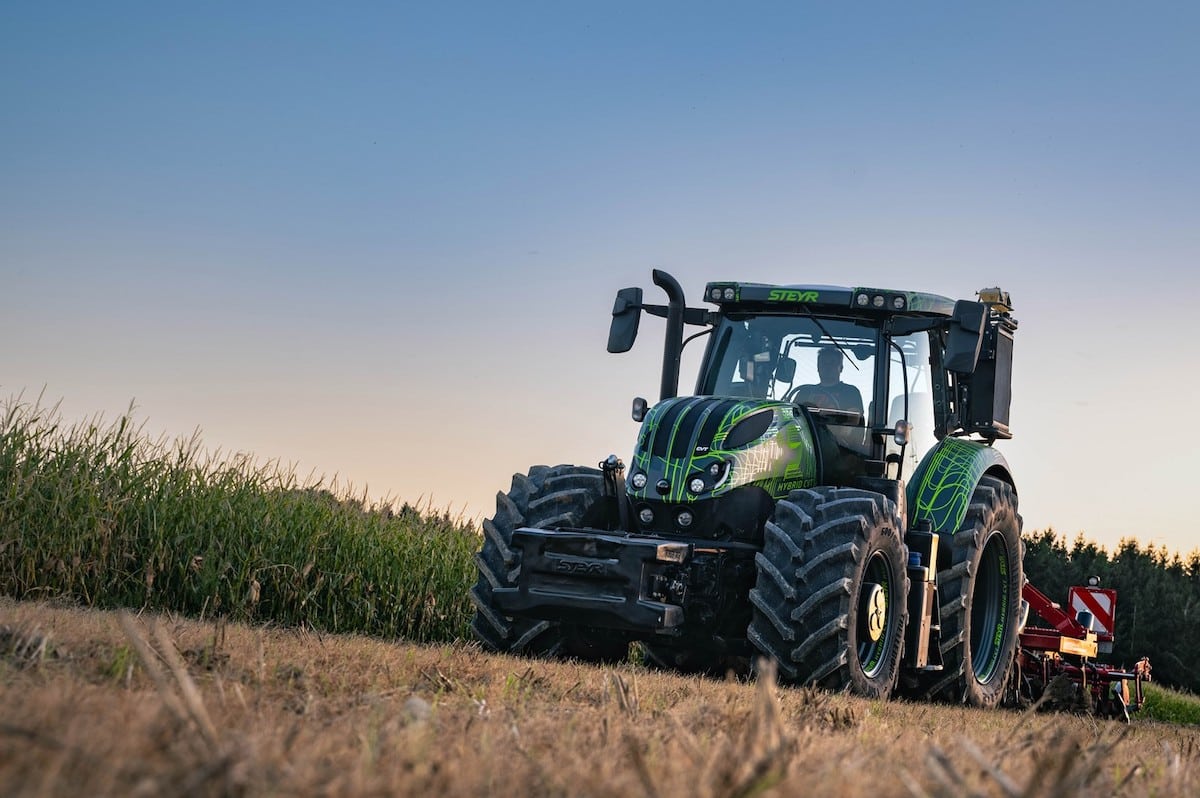Tractors Are Now Also Hybrid

Pointed out for its ecological performance, agriculture is taking action to reduce its footprint through the hybridization of its tractors.
Among the many measures taken to reduce CO2 emissions, developing alternatives to diesel engines is high on the agenda for off-road vehicles such as tractors, forage harvesters, and combine harvesters.
CNH presents the Steyr Hybrid CVT, a modular hybrid concept for standard medium and large-sized tractors. The prototype shown is based on an entry-level series model with 6 cylinders, producing 132 kW (180 hp). While the hydrostatic-mechanical continuously variable transmission has been reproduced exactly as the original, the diesel engine here develops 191 kW (260 hp) and is mounted on a new front chassis with independent wheel suspension and two integrated electric motors. The generator is driven by the diesel engine via a gear ratio and transmits the generated electrical power, up to 75 kW (102 hp), to the electric motor through power electronics.
In the electrical domain, there are SuperCaps, i.e., electrostatic energy accumulators capable of absorbing and delivering a large amount of power in a short time, including a braking resistor and a high-voltage AEF connector at the front and rear.
These components and the hybrid parallel-series structure enable many innovative functions on tractors, such as E-Steering, active front axle variable advance, as well as E-Boost, an electric boost function for rapid acceleration during transport. E-Torque-Filling balances peak loads, while E-Eco mode allows running in diesel-electric at low speeds, and E-Braking recovers braking energy via a retarder. Additionally, known functions include E-Torque Vectoring and E-Implement for variable torque distribution between axles or providing electric power to mounted tools.
One of the main areas of research focused on the benefits of electric transmission systems, which typically consume about 8% less fuel on average.
ALSO READ: Tesla Semi: Pepsi updates its truck fuel consumption figures
This page is translated from the original post "Les tracteurs aussi sont désormais hybrides" in French.
We also suggestthese articles:
Also read






